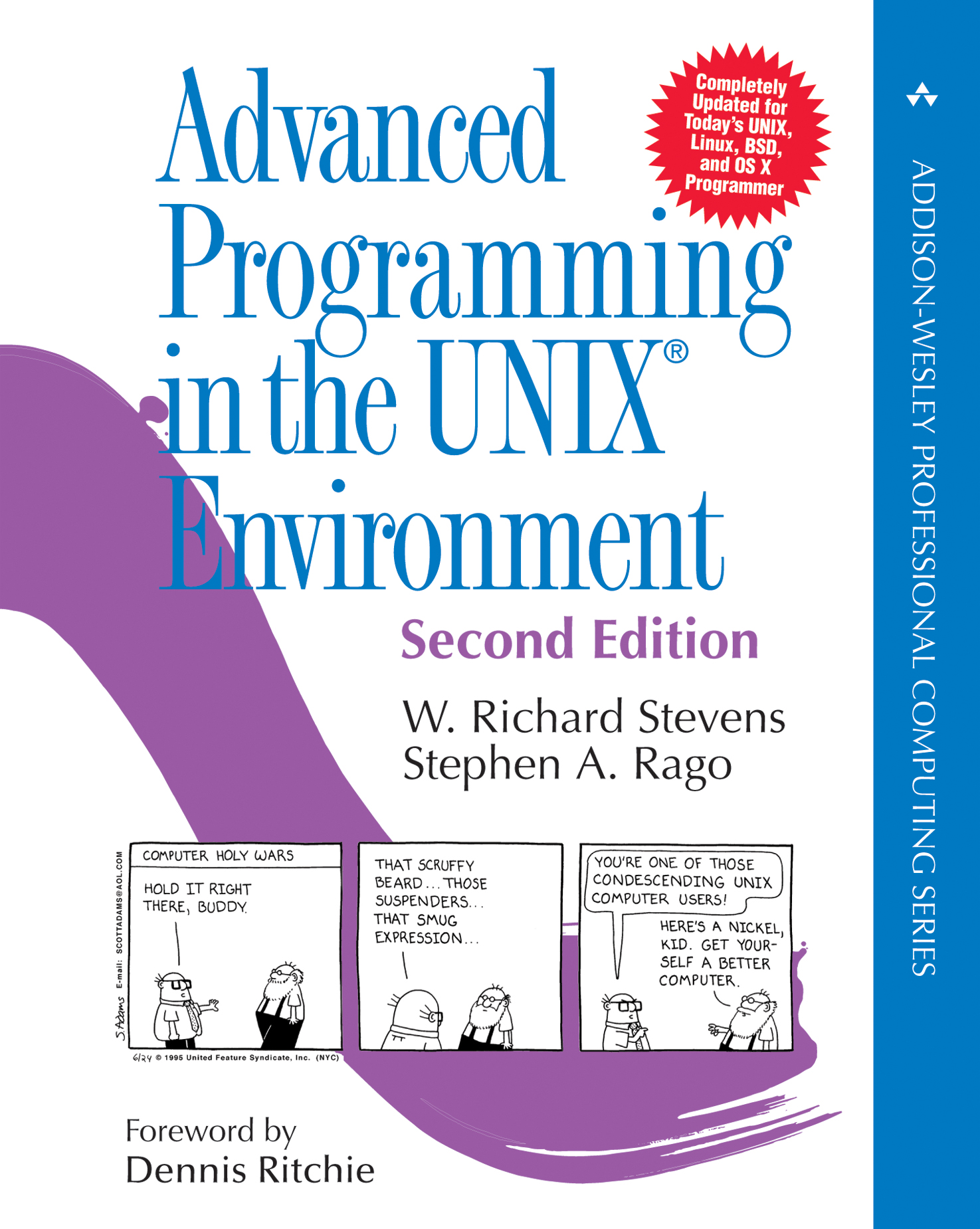Advanced Programming in the UNIX Environment: A Comprehensive Guide
Introduction
The UNIX environment, with its rich history and powerful tools, has been a cornerstone of computing for decades. Advanced programming in this environment demands a deep understanding of system calls, processes, memory management, and network programming. This white paper aims to provide a comprehensive overview of these topics, along with practical examples and best practices.
Core Concepts
1. System Calls
- Definition: System calls are functions that provide an interface between a process and the operating system kernel.
- Common System Calls:
- open(): Opens a file.
- close(): Closes an open file.
- read(): Reads data from a file or device.
- write(): Writes data to a file or device.
- fork(): Creates a new process.
- execve(): Executes a new program.
- wait(): Waits for a child process to terminate.
- signal(): Handles signals.
- socket(): Creates a socket for network communication.
2. Processes and Signals
- Process: A program in execution.
- Process States: Running, ready, waiting.
- Process Control: Using fork(), execve(), wait(), and signal() to manipulate processes.
- Signals: Asynchronous events that can interrupt a process.
- Signal Handling: Using signal() to define signal handlers.
3. Memory Management
- Virtual Memory: A technique that maps physical memory to virtual addresses.
- Memory Allocation: Using malloc() and free() to allocate and deallocate memory.
- Memory Mapping: Using mmap() to map files into memory.
- Memory Protection: Preventing processes from accessing unauthorized memory.
4. Input/Output
- File I/O: Reading and writing files using system calls like open(), read(), and write().
- Standard Input/Output: Interacting with the terminal using stdin, stdout, and stderr.
- Terminal I/O: Controlling the terminal using tcgetattr() and tcsetattr().
- Network I/O: Using sockets to communicate with other machines.
Advanced Topics
1. Inter-Process Communication (IPC)
- Pipes: Simple, unidirectional communication channels.
- FIFOs (Named Pipes): Persistent communication channels.
- Message Queues: Store and retrieve messages.
- Shared Memory: Efficiently share large amounts of data.
- Semaphores: Synchronize access to shared resources.
2. Threads
- Multithreading: Creating multiple threads of execution within a process.
- Thread Creation and Termination: Using pthread_create() and pthread_exit().
- Thread Synchronization: Using mutexes, condition variables, and barriers.
3. Network Programming
- Socket Programming: Creating sockets, binding, listening, connecting, and communicating.
- Client-Server Model: Implementing client-server applications.
- TCP/IP Protocol Suite: Understanding the TCP/IP protocol stack.
- Network Security: Protecting network communication.
Best Practices and Tips
- Error Handling: Always check return values of system calls and handle errors gracefully.
- Resource Management: Release resources (e.g., file descriptors, memory) when they are no longer needed.
- Security: Be aware of security vulnerabilities and write secure code.
- Code Readability: Use clear and concise code, with meaningful variable and function names.
- Testing: Thoroughly test your code to identify and fix bugs.
- Debugging: Use debugging tools like gdb to debug your code.
- Profiling: Analyze your code's performance using profiling tools.
References
- Advanced Programming in the UNIX Environment by W. Richard Stevens
- The Linux Programming Interface by Michael Kerrisk
- Unix Network Programming by W. Richard Stevens
- POSIX Standards
- Online Documentation and Tutorials
By mastering these concepts and following best practices, you can write robust, efficient, and secure programs in the UNIX environment. Contactt ias-research.com



